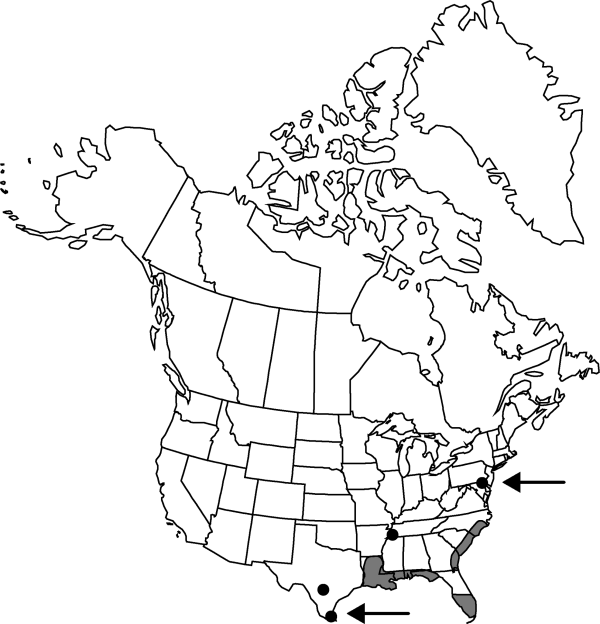Difference between revisions of "Alternanthera paronychioides"
Voy. Distr. Diam. 2: 439. 1833.
FNA>Volume Importer |
FNA>Volume Importer |
(No difference)
| |
Revision as of 22:26, 16 December 2019
Herbs, perennial, 1–8 dm. Stems prostrate, villous, glabrate. Leaves sessile; blade elliptic, ovate-rhombic, or oval, 0.6–2.5 × 0.3–1.1 cm, apex acute or obtuse, villous, soon glabrate. Inflorescences axillary, sessile; heads white, globose, 0.5–1 cm diam.; bracts less than 1/2 as long as tepals. Flowers: tepals monomorphic, white, lanceolate, 3–5 mm, apex acuminate, without rigid, spinose tips, hairs not barbed; stamens 5; anthers 3–5, globose; pseudostaminodes ligulate, shorter than filaments, margins entire or dentate. Utricles included within tepals, stramineous, orbiculate to rounded-obovate, 2–2.3 mm, apex truncate. Seeds lenticular, 1.2–1.5 mm.
Phenology: Flowering spring–late fall, year-round in far south.
Habitat: Ballast ground, swamps, sandy places, limestone near salt water
Elevation: 0-10 m
Distribution

Ala., Del., Fla., Ga., La., Miss., N.J., N.C., Pa., S.C., Tenn., Tex., Mexico, West Indies, Central America, South America, Asia, Africa, Pacific Islands.
Discussion
Plants identified as Alternanthera paronychioides var. amazonica Huber have been collected on salt flats in central Louisiana. The specimens I have seen are not sufficiently distinct to warrant varietal recognition.
Selected References
None.